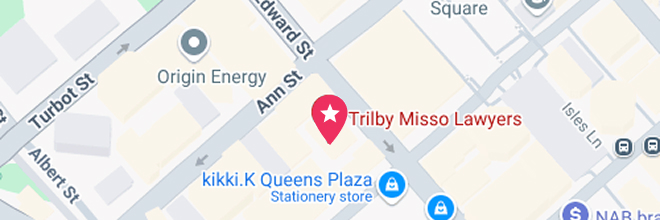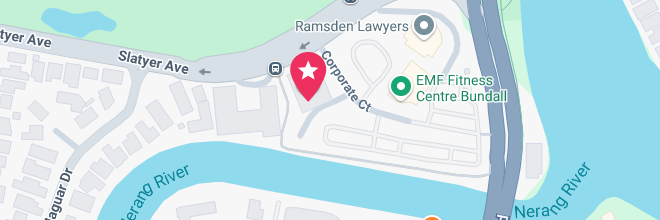Our Brisbane CBD Office
- Suite 400, Level 4/288 Edward St, Brisbane City QLD 4000
- (07) 3910 5470




Suffering injuries from a motor vehicle accident creates more than just pain and suffering for the individual involved – it can also create financial stress, uncertainty and a feeling of helplessness.
As lawyers, we understand what our clients and their families go through. We also understand the best way to minimise our clients stress while still ensuring they are getting what they are entitled to.
There has recently however, been a shift towards those injured in motor vehicle accidents making claims directly with the CTP insurer as self-represented claimants. Self-represented claimants now make up a quarter of all CTP claims here in Queensland. In 2021-22, self-represented claimants only accounted for 15% of all CTP claims which has meant an increase of 66% in just a few short years[1]. This may be, in part, driven by the current cost-of-living crisis and people feeling pressure to secure financial outcomes early. But we believe this is also being driven by, or even specifically targeted, by CTP insurers and their advertising.
This shift is leaving self-represented claimants significantly worse off. Those who choose to battle it alone are, on average, walking away with eight times less compensation than legally represented individuals[2]. The gap is even wider when it comes to treatment and rehabilitation: self-represented claimants receive approximately nine times less in insurer-funded medical and support services. These figures highlight not just a financial disadvantage, but a systemic failure to ensure equitable outcomes for vulnerable individuals navigating complex claims without legal guidance.
The data doesn’t lie: the gap between self-represented and legally represented is wide and should not be ignored. The timing of a conversation around advertisements and cost contributions are crucial, in pulling back the curtain and protecting claimants in the personal injury space.
On paper, the self-representation pitch sounds tempting: quicker settlements, lower stress and no legal fees. The reality? Legally represented claimants are securing on average, $84,196 in damages, while self-represented individuals scrape together just $10,429[3]. The gap is even wider when you consider treatment and recovery of costs.
The average outlay for medical and related expenses?
Insurers are also relying on the misconception that lawyers will take half of any settlement, and that this will leave the claimant worse off. In Queensland, legal fees are capped by the 50/50 rule, which ensures that the maximum a firm can receive out of a claimant’s settlement is 50% after statutory refunds and disbursements are deducted[5]. But even if this cap were applied in full, legally represented claimants still walk away with significantly more.
On average, legally represented individuals receive eight times more compensation than those who self-represent. So even if a lawyer were to take the maximum allowable fee, the claimant would still be four times better off than if they had gone it alone. The same applies to treatment and rehabilitation funding, where represented claimants receive up to nine times more support and settlements exclude the rehabilitation paid by Insurers, meaning clients receive the full benefit of same. These outcomes speak for themselves: legal representation doesn’t just protect your rights—it delivers materially better results.
Despite the data, some Insurers still continue to position self-representation as a “quick and simple alternative’, carefully omitting the reality: faster settlements often mean drastically reduced entitlements, compromised evidence, and claimants with no idea what they’re truly owed.
One recent client came to us confused after receiving an offer from the insurer while self-represented for $50,000.00. While on face value that may seem somewhat reasonable, in this case it was essentially just the refund to WorkCover. When she pressed for clarification, she was told that was all she was entitled and there was a lack of evidence to justify more. No real investigation of potential economic loss, no thorough exploration of medical evidence: just a quiet dismissal of everything she might rightfully claim. We took on the matter and negotiated a settlement more than three times higher. Even after legal fees and disbursements, the client walked away with $60,000.00 more in her pocket than if she had accepted the Insurer’s offer and representations that she had already received what she was entitled to.
That’s the reality behind the insurer’s spin. In truth, when armed with proper advocacy, this claimant walked away not just with dignity and clarity, but with real compensation.
Unfortunately, we have many more examples like this at play.
The continued promotion of self-representation by CTP insurers isn’t just misleading – it’s strategic.
While Insurers are being permitted to market direct-claim pathways that downplay risks and obscure comparative outcomes, lawyers remain subject to tight restrictions on what they can say and how they say it. There are limited opportunities for lawyers to educate on the risks of self-representation and to clarify some of the representations being made by insurers.
While pushing fine print to highlight that lawyers “may charge up to 50%” of compensation, insurers omit that lawyers are carefully regulated by independent bodies and subject to ethical obligations[6]. Even further, they fail to disclose their representation of the ‘at-fault’ party and the conflict of interest this represents.
Making a CTP claim is advertised and performed to injured persons as a standard insurance process, similar to making an insurance claim where you accidentally bump into the trolley bay at a shopping Centre: submit your claim and the Insurer will pay you what you’re entitled. The data clearly shows this isn’t how it’s playing out in real time, and it is harmful to direct claimants to allow control of assessing this entitlement to an entity whose purpose and financial success depends on paying claimants less.
The imbalance in advertisement and information being shared to claimants leave many unaware of their rights and what they’re entitled to.
In ‘traditional’ civil actions, an injured person can claim their legal costs as part of their claim.
In 2002, changes were made limiting the insurers obligations to pay a claimant’s legal costs[7]. In 2009-2010, insurers lobbied to have these thresholds increased year on year, arguing that rising legal and expert costs warranted tighter cost controls[8]. During this time, a claimant who recovered damages exceeding $58,900.00 in 2010 could expect their legal costs to be paid on a standard basis. For those recovering between $35,340.00 and $58,900.00, a fixed contribution of $2,950.00 was made to assist with legal expenses[9]. Fast forward to 2025, and the thresholds have increased. To recover costs on a standard basis, you must now recover above $91,460.00. This is an increase of 55% over 15 years. Likewise, the fixed cost contribution has risen to only $4,590.00, applicable to claims between $54,850.00 and $91,460.00, up 55.6% from the 2010 figure[10].
This upward shift in thresholds reflects a significant change in cost-recovery, particularly for claimants with moderate injuries. While the thresholds have risen in line with CPI and average earnings, the cost of medico-legal reports and legal representation has often outpaced these adjustments, leaving many claimants under-compensated for the cost of pursuing their rights.
It is hard to reconcile the insurer’s representations and concerns about legal costs with their previous advocacy to limit a claimant’s right to recovery.
If genuinely concerned about a claimant’s legal fees (as opposed to their own profits), it would be suggested that the insurers would support:
The Motor Accident Insurance Commission (MAIC) plays a vital role in overseeing Queensland’s CTP scheme, and with that comes a unique opportunity to empower injured individuals with clearer, more comprehensive information. While MAIC holds extensive data on claim outcomes and processes, much of this insight remains inaccessible to the very people the scheme is designed to support.
Currently, the digital claims pathway—particularly the eNOAC process—guides users directly to insurers with minimal context. The simplicity of the online form and accompanying instructional video may help streamline lodgement, but it risks oversimplifying a complex legal process. For example, the video presents a step-by-step guide that makes the claims process appear straightforward, yet it omits key considerations such as the role of legal advice, the implications of early settlement, and the fact that insurers do not act in the claimant’s best interests[11].
To foster greater confidence in the CTP scheme, MAIC could consider:
These enhancements wouldn’t complicate the process, they’d enrich it. By making the claims experience more transparent and equitable, MAIC can ensure that injured people are not just guided through a form but truly supported in navigating their recovery and rights.
[1] Motor Accident Insurance Commission, Annual Report 2021–22 (Queensland Government, 2022) 10 <https://maic.qld.gov.au/wp-content/uploads/2022/09/MAIC-Annual-Report-2021-22.pdf>.
[2] Motor Accident Insurance Commission, Annual Report 2021–22 (Queensland Government, 2022) 10; see also Taylor Fry, Annual Review of Premium Components (31 December 2024), cited in Schultz Law, Self-represented CTP claimants v insurers: an unfair battle.
[3] Motor Accident Insurance Commission, *Taylor-Fry Annual Review of Premium Components* (Presentation, March 2024) <https://maic.qld.gov.au/scheme-knowledge-centre/presentations/>.
[4] Ibid.
[5] Legal Profession Act 2007 (Qld) s 347; Legal Profession Regulation 2017 (Qld) s 5.
[6] Civil Liability Act 2003 (Qld) s 55F; Motor Accident Insurance Act 1994 (Qld) s 55.
[7] Motor Accident Insurance Commission, CTP Scheme Cost Recovery Thresholds Review (Queensland Government, 2010) 3.
[8] Ibid.
[9] Ibid.
[10] Motor Accident Insurance Commission, CTP Scheme Cost Recovery Thresholds Update (Queensland Government, 2025) 2.
[11] Motor Accident Insurance Commission, eNOAC Instructional Video and Claims Portal (Queensland Government, 2024).
Use this simple online tool and find out if you have a claim in less than thirty seconds. You can choose to remain anonymous.
Your next step is a small one. All you need to do is give us a call on 07 3910 5470 or complete this form here to arrange a quick chat.
During this initial conversation, we will:

We understand that taking legal action can be stressful, and we’ll do all we can to ease your concerns.
The chat can take place at our place, your place, or by phone. There is no cost, no pressure, and no obligation.
Call 07 3910 5470 or fill out this form, and we’ll get back to you within 2 hours (during business hours). We look forward to meeting you.
enquire now